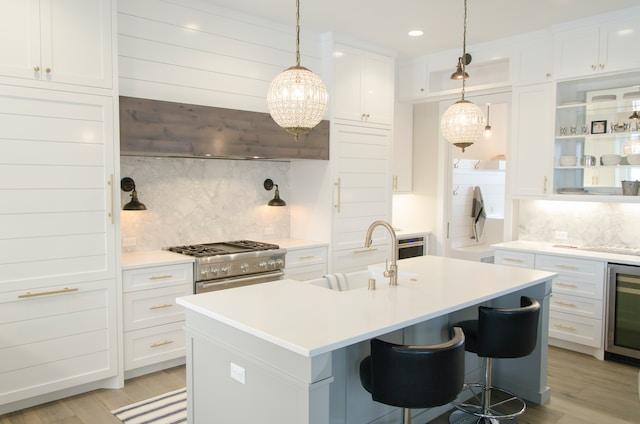In the world of retail, the interior design of a store plays a critical role in attracting customers, enhancing their shopping experience, and ultimately driving sales. Commercial interior designers have a unique task of creating spaces that are not only aesthetically pleasing but also functional and tailored to the brand’s identity. In this blog post, we will explore ten strategies that commercial interior designers can employ to transform retail interiors successfully.
Retail Interior Design: What Sets It Apart?
Understanding retail interiors is distinct from other types of interior design due to its specific focus on creating spaces tailored for commercial purposes, particularly the sale of products or services. Unlike residential design, where personal preferences and comfort are paramount, retail interior design is driven by the need to attract and engage customers, ultimately leading to increased sales.
Retail designers must consider factors such as brand identity, target audience, traffic flow, visual merchandising, and the strategic placement of products. Moreover, retail interiors often require a blend of aesthetics and functionality, with the goal of creating a memorable and compelling shopping experience.
This distinctiveness makes retail interior design a dynamic and challenging field that combines creativity with business acumen to achieve tangible results for businesses and brands.
Strategies That Can Transform Retail Interiors
The interior design of a store can be a game-changer. It’s not just about creating a visually appealing space; it’s about crafting an environment that enhances the shopping experience, draws in customers, and drives sales. In this article, we’ll explore a range of strategies that have the power to transform retail interiors, making them more engaging, efficient, and aligned with the brand’s identity and goals. Whether you’re a retail business owner or a commercial interior designer, these strategies will provide valuable insights into how to elevate the retail space to new heights.
1. Understand the Brand and Target Audience:
Before diving into the design process, it’s essential to thoroughly understand the brand and its target audience. What does the brand represent, and who are its customers? Tailoring the interior design to match these factors will create a cohesive and appealing shopping environment.
2. Create a Memorable Entrance:
First impressions matter. Design an entrance that captures attention and draws customers into the store. This can include eye-catching displays, intriguing signage, and well-placed lighting.
3. Optimize Store Layout:
Efficient space planning is crucial. The layout should guide customers through the store in a logical and enjoyable way. Consider factors like traffic flow, product placement, and aisle width to create a seamless shopping experience.
4. Lighting Matters:
Lighting can dramatically impact the mood and ambiance of a retail space. Use a combination of natural and artificial lighting to highlight key areas and products, creating a visually engaging atmosphere.
5. Color Psychology:
Colors evoke emotions and influence buying decisions. Select a color scheme that aligns with the brand’s identity and resonates with the target audience. For instance, warm colors like red and orange can create a sense of urgency, while cool blues and greens promote relaxation.
6. Visual Merchandising:
Effective visual merchandising involves displaying products in an enticing way. Use props, mannequins, and thematic displays to tell a story and showcase products’ features and benefits.
7. Incorporate Technology:
Integrate technology where it enhances the shopping experience. Interactive displays, digital signage, and virtual try-on solutions can engage customers and provide valuable information.
8. Flexible Store Design:
Retail spaces should be adaptable to changing trends and seasons. Design features like modular fixtures and movable displays to easily refresh the store’s look and product placement.
9. Sustainability:
Consider eco-friendly design elements and materials. Sustainable design not only appeals to environmentally conscious customers but also showcases the brand’s commitment to responsible practices.
10. Customer Comfort:
Lastly, prioritize customer comfort. Provide seating areas, restrooms, and convenient checkout counters. A comfortable shopping experience encourages customers to stay longer and make more purchases.
Conclusion:
Commercial interior designers have the power to transform retail interiors into inviting and profitable spaces. By understanding the brand, optimizing layouts, leveraging design elements, and prioritizing customer experience, designers can create retail environments that not only attract shoppers but also keep them coming back for more. These ten strategies serve as a guide for commercial interior designers looking to excel in the world of retail design.



